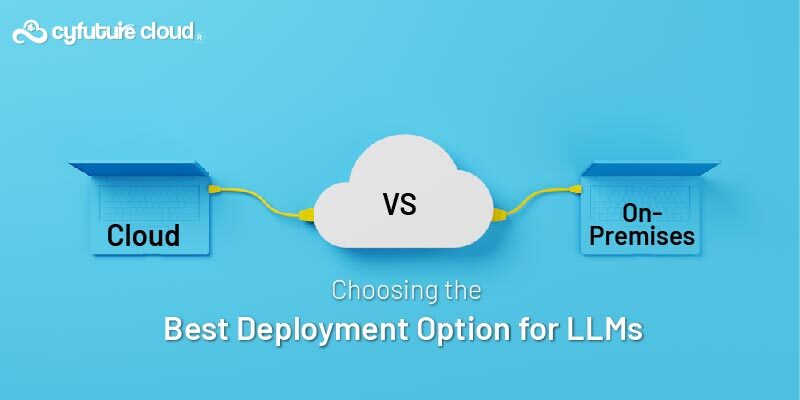Table of Contents
Kubernetes is an open-source container orchestration system for automating the deployment, scaling, and management of containerized applications. It was originally developed by Google and was later donated to the Cloud Native Computing Foundation (CNCF).
Kubernetes was designed to provide a platform-agnostic way to manage containerized workloads and services, making it easier for organizations to deploy and run applications in a variety of environments. It allows developers to deploy their applications in a consistent and reproducible way, without having to worry about the underlying infrastructure.
Kubernetes is commonly used in the deployment and management of microservices-based applications, but it can also be used to manage other types of workloads. It provides a range of features for scaling applications, rolling out updates, and self-healing, which makes it a popular choice for running distributed systems in production environments.
Overall, Kubernetes is a powerful tool for managing containerized applications at scale, and it has become the de facto standard for container orchestration in the cloud-native ecosystem.
Overview of the architecture of a Kubernetes system
The architecture of a Kubernetes system consists of a set of worker machines, called nodes, that run containerized applications. The nodes are managed by a central control plane, which consists of a set of components that are responsible for the overall orchestration of the system.
The main components of a Kubernetes system include:
- Nodes: A node is a worker machine in a Kubernetes cluster. It runs one or more pods, which are the smallest deployable units in Kubernetes. Nodes are managed by the control plane.
- Pods: A pod is the basic execution unit of a Kubernetes application. It is a logical host for one or more containers, which share the same network namespace, storage, and lifecycle. Pods are ephemeral and can be created, destroyed, and replaced by the control plane as needed.
- Containers: A container is a lightweight, standalone, executable package that contains everything needed to run an application, including the application code, libraries, dependencies, and runtime. Containers are isolated from each other and can be easily moved between nodes.
- Control plane: The control plane is the central management component of a Kubernetes system. It consists of a set of processes that run on the master node and is responsible for the overall orchestration of the cluster. The control plane includes components such as the API server, scheduler, and controller manager, which handle tasks such as scheduling pods, managing nodes, and maintaining the desired state of the cluster.
To deploy and manage applications on Kubernetes, users define desired states for their applications using manifest files, which are written in YAML or JSON and specify things like the number of replicas, the container image to use, and the resources needed by the application. The control plane then ensures that the actual state of the cluster matches the desired state by creating, updating, or deleting pods as needed.
Kubernetes uses a scheduler to decide which nodes should run which pods, based on factors such as the resources required by the pod and the available capacity on the nodes. The scheduler tries to balance the workload across the nodes in the cluster, taking into account constraints such as node labels and affinity rules.
Overall, Kubernetes provides a flexible and scalable way to manage containerized applications, allowing users to deploy, scale, and update their applications with minimal effort.
Step-by-step instructions for setting up a Kubernetes cluster using a specific method
There are several methods for setting up a Kubernetes cluster, depending on your needs and preferences. Here are some common options:
- Using a managed service: One of the easiest ways to set up a Kubernetes cluster is to use a managed service such as Google Kubernetes Engine (GKE), Amazon Elastic Container Service for Kubernetes (EKS), or Azure Kubernetes Service (AKS). These services handle the provisioning and management of the underlying infrastructure, allowing you to focus on deploying your applications.
- Installing on bare metal: If you want to set up a Kubernetes cluster on your own physical servers or virtual machines, you can install Kubernetes directly on the hardware. This requires more effort and technical expertise, but gives you more control over the infrastructure and can be a good option for certain scenarios.
- Using a local development environment: If you want to test and develop applications on Kubernetes without setting up a full-scale cluster, you can use a local development environment such as Minikube or MicroK8s. These tools allow you to run a single-node Kubernetes cluster on your laptop or workstation.
Different ways to deploy applications on Kubernetes
There are several ways to deploy applications on Kubernetes. Some common methods include:
- Using YAML files: One of the most basic ways to deploy an application on Kubernetes is to use a YAML file that defines the desired state of the application. The YAML file can specify things like the number of replicas, the container image to use, and the resources needed by the application. To deploy the application, you can use the kubectl command-line tool to apply the YAML file to the cluster.
- Using Helm charts: Helm is a package manager for Kubernetes that makes it easier to deploy complex applications. A Helm chart is a collection of YAML templates that define the resources needed by an application. To deploy an application using a Helm chart, you can use the helm command-line tool to install the chart into the cluster.
- Using a continuous integration/continuous deployment (CI/CD) platform: Many organizations use a CI/CD platform such as Jenkins, GitHub Actions, or Azure DevOps to automate the deployment of their applications. These platforms can be configured to build and deploy applications to a Kubernetes cluster as part of the CI/CD pipeline.
Description of tools and techniques for monitoring and troubleshooting a Kubernetes cluster
There are several common tasks involved in managing and maintaining a Kubernetes cluster, including:
- Scaling: Kubernetes allows you to easily scale the number of replicas of an application up or down based on demand. To scale an application, you can use the kubectl command-line tool or the Kubernetes API to update the number of replicas in the deployment manifest.
- Rolling updates: Kubernetes supports rolling updates, which allow you to update the containers in a deployment without downtime. To perform a rolling update, you can use the kubectl command-line tool or the Kubernetes API to update the container image in the deployment manifest. Kubernetes will then gradually roll out the update to the replicas, ensuring that there is always a working version of the application available.
- Debugging: When things go wrong in a Kubernetes cluster, it can be challenging to identify the root cause of the problem. To troubleshoot issues, you can use tools such as kubectl and the Kubernetes dashboard to view logs, events, and other cluster metadata. You can also use tools like kubectl exec and kubectl port-forward to debug issues directly in the containers.
To monitor and troubleshoot a Kubernetes cluster, you can use a combination of built-in tools and third-party solutions. Some common options include:
- Kubernetes dashboard: The Kubernetes dashboard is a web-based UI that provides visibility into the state of the cluster and allows you to view and manage various cluster resources.
- kubectl: kubectl is the command-line interface for Kubernetes, and it provides a range of commands for interacting with the cluster. You can use kubectl to view logs, events, and other metadata, as well as to perform tasks such as scaling and rolling updates.
- Prometheus: Prometheus is an open-source monitoring and alerting system that is commonly used in Kubernetes environments. It can be configured to scrape metrics from the Kubernetes API server and alert on predefined thresholds.
- Elastic Stack: The Elastic Stack (formerly known as the ELK stack) is a set of tools for collecting, storing, and analyzing log data. It can be used to monitor the logs generated by a Kubernetes cluster and identify issues.
By using a combination of these tools, you can effectively monitor and troubleshoot your Kubernetes cluster to ensure that it is running smoothly.
Conclusion:
In conclusion, Kubernetes is a powerful and widely-used container orchestration system that makes it easier to deploy, scale, and manage containerized applications. It provides a range of features for self-healing, scaling, and rolling updates, which make it a popular choice for running distributed systems in production environments.
Looking out for much technological and cloud related help, get in touch with our experts today!
Send this to a friend

 Server Colocation
Server Colocation CDN Network
CDN Network Linux Cloud Hosting
Linux Cloud Hosting Kubernetes
Kubernetes Pricing Calculator
Pricing Calculator
 Power
Power
 Utilities
Utilities VMware Private Cloud
VMware Private Cloud VMware on AWS
VMware on AWS VMware on Azure
VMware on Azure Service Level Agreement
Service Level Agreement 



















